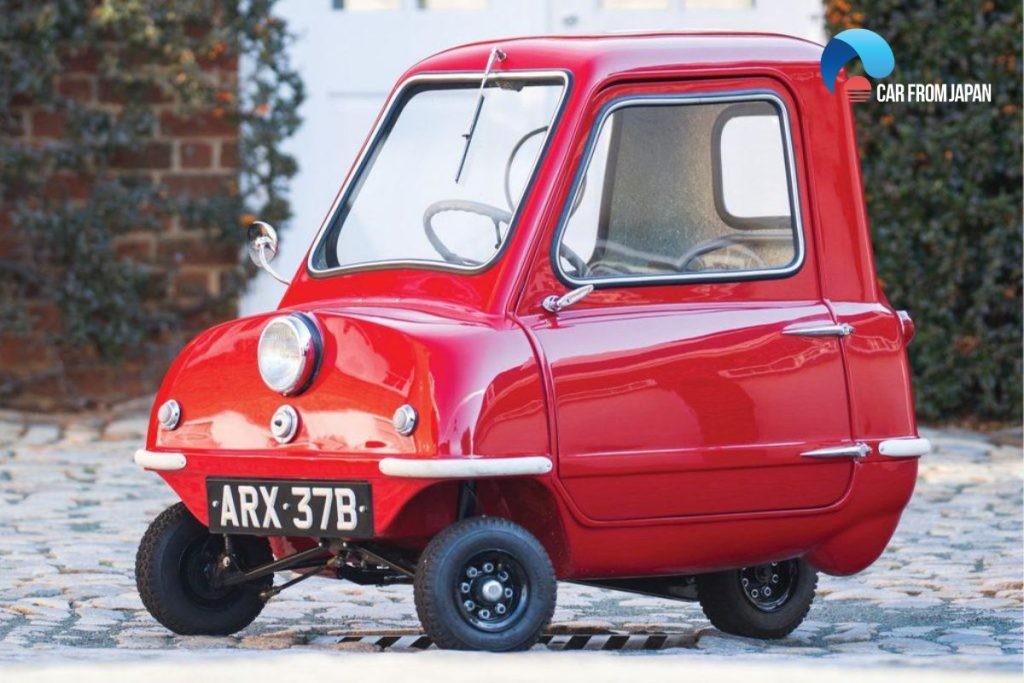We all have a secret admiration for speed demons, picturing ourselves behind the wheel like action movie heroes. But have you ever considered the opposite end of the spectrum? What about the unique experience of driving the slowest car in the world?
In a world obsessed with horsepower, there’s a different kind of charm in embracing a leisurely pace. Imagine a drive where you can truly soak in your surroundings, enjoy improved fuel efficiency, reduce your carbon footprint, and wave goodbye to speeding tickets.
While the automotive market offers a plethora of vehicles designed for velocity, a select few champion the art of slow motion. But which car truly holds the title for being the absolute slowest? Let’s dive into the fascinating world of low-speed automobiles and find out.
The Reigning Champion: Peel P50 – The Slowest Car on Earth
The undisputed titleholder for the slowest car in the world belongs to the iconic Peel P50, crafted by Peel Engineering. This microcar isn’t just slow; it’s a legend, etched in history and holding the Guinness World Record as the smallest car ever manufactured. Its claim to fame also includes the coveted title of the slowest production car.
Just how slow is it? The Peel P50’s top speed is a deliberate crawl of just 28mph (approximately 45 km/h). This speed is not a flaw, but a design philosophy, perfectly aligning with Peel’s original slogan: “almost cheaper than walking.”
The Peel P50: Officially recognized as the smallest and slowest car in the world.
Peel P50 Specs: Delving into the Details of the World’s Slowest Vehicle
First introduced in 1962, the Peel P50, with its diminutive 54-inch length, immediately cemented its place as the world’s smallest car. Production ceased in 1969, but the P50 made a remarkable comeback in 2010, now available in both petrol and electric versions.
The original model was a study in minimalist design: a single door on the left, one windscreen wiper, and a solitary headlight. Notably absent was a reverse gear, compensated by a rear handle allowing drivers to manually maneuver the lightweight vehicle (a mere 130 pounds). This featherweight design also made it incredibly easy to tow.
The modern iteration retains the original’s charming aesthetics but incorporates significant updates to the drivetrain, suspension, and steering, and thankfully, includes a functional reverse gear.
While both the classic and contemporary versions share the same 28mph top speed, their engines differ. The original boasted a 49cc moped engine producing 4.2 horsepower. Intriguingly, the new petrol version delivers slightly less power, at 3.35 horsepower, from a 49cc four-stroke engine.
Modern enhancements include a CVT (Continuously Variable Transmission), replacing the original’s three-speed transmission. The electric version mirrors the power output, utilizing a moped electric motor and gelled-electrolyte batteries.
DISCOVER MORE: Looking for a Small Car? Explore the Comparison Between Honda Fit and Nissan Tiida
Beyond Peel: A Lineup of Uniquely Slow Cars and Their Stories
Beyond the Peel P50, the world of microcars offers a fascinating glimpse into automobiles that prioritized economy and novelty over outright speed. Here are a few notable examples of slow cars, each with its own unique story:
Brütsch Mopetta
Preceding the P50 by six years, the open-topped Brütsch Mopetta, designed by Egon Brütsch in Stuttgart, featured a reversed configuration. It utilized two rear wheels for drive and a single front wheel for steering.
The Brütsch Mopetta: A rare and stylish microcar, known for its slow pace and unique design.
Its striking design and extreme rarity have spurred numerous reproductions, including one crafted by British microcar specialist Andy Carter, ensuring its legacy lives on.
Aixam Coupe
The Aixam Coupe is a two-seater quadricycle, categorized as a ‘carped’ coupe. Notably, in the UK, it can be driven without a standard driver’s license, making it accessible to younger drivers (16+) after completing specific moped tests.
Power comes from a 400cc two-cylinder diesel engine producing a modest 5.6 horsepower. With a top speed of just 30 mph, the Aixam Coupe firmly secures its place among the slowest cars available.
The Aixam Coupe: A modern slow car option, practical for short urban commutes.
FMR TG500
Following post-WWII restrictions on aircraft production, Messerschmitt ventured into microcars, developing the Kabinenrollers (‘cabin scooters’), three-wheeled vehicles based on the Fend Flitzer handicapped carriage.
The FMR TG500, a faster four-wheeled variant, emerged as a performance-oriented microcar (relatively speaking!). Its 494cc, twin-cylinder engine produced around 20bhp. Despite its microcar roots, a FMR TG500 fetched over $300,000 at auction in 2013, highlighting the collectibility of these unique vehicles.
The FMR TG500: A surprisingly valuable slow car, with a racing pedigree in microcar form.
Fuji Cabin
Produced in Tokyo from 1955 to 1958, the Fuji Cabin shared design similarities with the P50 in terms of structure, suspension, brakes, and its distinctive Cyclops headlamp.
However, the Fuji Cabin featured a rear-mounted 122cc, 5.5bhp single-cylinder engine. Its two seats were staggered, and its 115-inch length, while still compact, made it a longer wheelbase option compared to the Peel P50.
The Fuji Cabin: A Japanese microcar from the 1950s, offering a slightly larger take on the slow car concept.
Is a Peel P50 in Your Future? The Appeal of the Slowest Modern Car
Purchasing the slowest modern car might seem counterintuitive, especially considering the Peel P50’s price tag of around $16,000. For that price, a wide array of more conventional and feature-rich vehicles, including used mid-range cars, become available.
However, the Peel P50 offers a unique proposition beyond mere transportation. It boasts an impressive 118 mpg (35 mpg for the electric version), making it exceptionally economical and arguably a more efficient alternative to walking for short distances. Furthermore, it’s famously known as the only car that can legitimately be parked inside your living room!
For a humorous take on this unique vehicle, check out this classic Top Gear segment!
FAQs About the World’s Slowest Cars
What is the world’s slowest car price?
The value of a Peel P50 is highly variable. Original models, due to their extreme rarity, command significant sums at auction, often exceeding $100,000. Modern replicas are available at a lower, though still premium, price point.
What is the slowest electric car ever made?
The Buddy Electric, a Norwegian city car, is often cited as one of the slowest production EVs, with a top speed of 50 km/h (31 mph). Other small electric cars like the G-Wiz are also known for their limited performance.
Are there any modern cars that are slower than classic models?
Yes, surprisingly, several modern ultra-efficient and city-focused cars are slower than many classic cars. Examples include the Renault Twizy and the Citroën Ami, both with a top speed of 28 mph (45 km/h). These vehicles prioritize urban maneuverability and efficiency over speed.
Can a car be too slow to be legally driven on highways?
Indeed, many regions have minimum speed limits on highways. Vehicles like the G-Wiz or Citroën Ami, with their limited top speeds, are often restricted to city roads and are not permitted on highways in many areas.
Final Thoughts on the Slowest Cars Worldwide
The slowest car in the world, epitomized by the Peel P50 and its microcar brethren, occupies a special niche in automotive history. They remind us that automotive appeal isn’t solely about speed and power. Practicality, novelty, and a unique driving experience can be just as compelling.
To explore more fascinating insights into the automotive world, stay connected with cars.edu.vn for your daily dose of automotive industry knowledge! https://carfromjapan.com/article/category/industry-knowledge/

